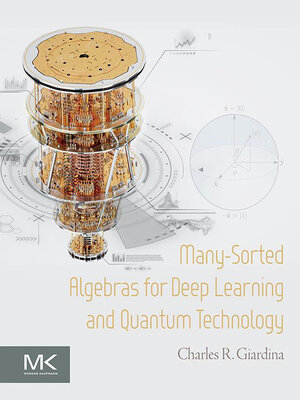
Sign up to save your library
With an OverDrive account, you can save your favorite libraries for at-a-glance information about availability. Find out more about OverDrive accounts.
Find this title in Libby, the library reading app by OverDrive.



Search for a digital library with this title
Title found at these libraries:
| Library Name | Distance |
|---|---|
| Loading... |
Many-Sorted Algebras for Deep Learning and Quantum Technology presents a precise and rigorous description of basic concepts in Quantum technologies and how they relate to Deep Learning and Quantum Theory. Current merging of Quantum Theory and Deep Learning techniques provides a need for a text that can give readers insight into the algebraic underpinnings of these disciplines. Although analytical, topological, probabilistic, as well as geometrical concepts are employed in many of these areas, algebra exhibits the principal thread. This thread is exposed using Many-Sorted Algebras (MSA). In almost every aspect of Quantum Theory as well as Deep Learning more than one sort or type of object is involved. For instance, in Quantum areas Hilbert spaces require two sorts, while in affine spaces, three sorts are needed. Both a global level and a local level of precise specification is described using MSA. At a local level operation involving neural nets may appear to be very algebraically different than those used in Quantum systems, but at a global level they may be identical. Again, MSA is well equipped to easily detail their equivalence through text as well as visual diagrams. Among the reasons for using MSA is in illustrating this sameness. Author Charles R. Giardina includes hundreds of well-designed examples in the text to illustrate the intriguing concepts in Quantum systems. Along with these examples are numerous visual displays. In particular, the Polyadic Graph shows the types or sorts of objects used in Quantum or Deep Learning. It also illustrates all the inter and intra sort operations needed in describing algebras. In brief, it provides the closure conditions. Throughout the text, all laws or equational identities needed in specifying an algebraic structure are precisely described.
- Includes hundreds of well-designed examples to illustrate the intriguing concepts in quantum systems
- Provides precise description of all laws or equational identities that are needed in specifying an algebraic structure
- Illustrates all the inter and intra sort operations needed in describing algebras







